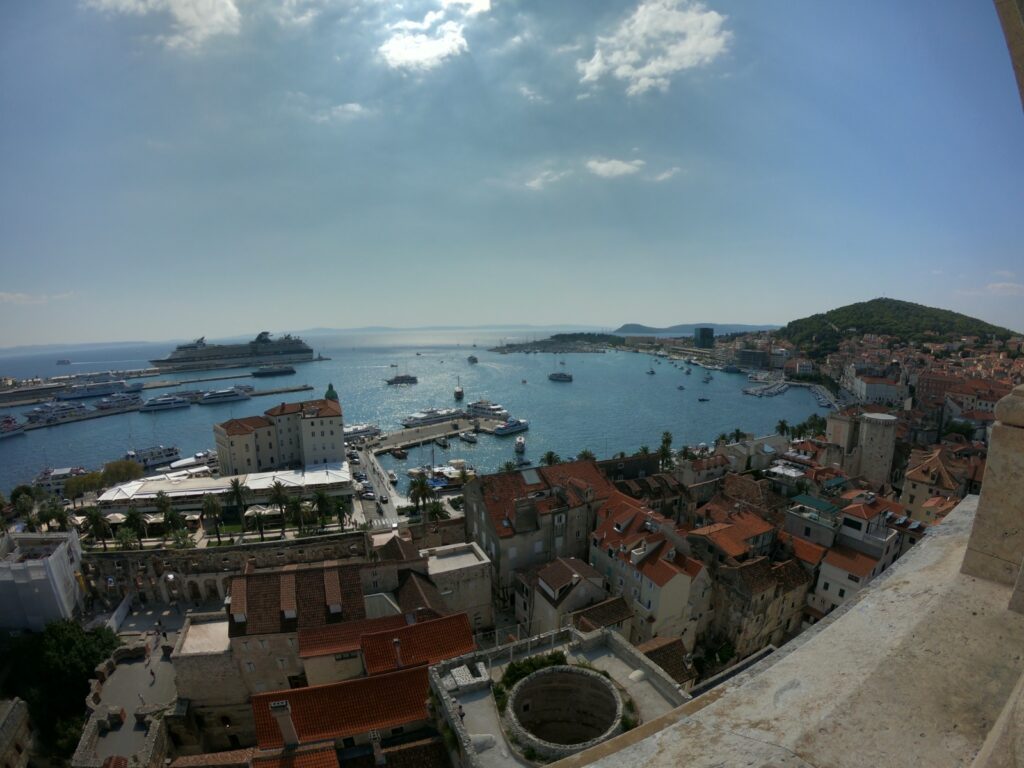Split is one of the most fascinating destinations in Croatia. Known as the ‘Pearl of the Adriatic’, this vibrant and historic city is a real treasure trove for tourists from all over the world.
With a rich history spanning over 1700 years, Split has something for everyone. Whether you’re a lover of ancient history, an outdoor enthusiast.
Or simply someone who enjoys a good meal and an amazing sunset over the sea, Split will not disappoint.
In this article, we will take you on a fascinating journey through Split, discovering its main sights, its incredible food and drink, and its best kept secrets.
Grab your sun hat, put on your sunglasses and be ready to discover Split – the sparkling pearlization of the Adriatic.
A Tourist Guide ABOUT SPLIT by the Adriatic Pearl in Croatia
 p>
p>
Split is a charming town on the Adriatic coast of Croatia with approximately 200,000 inhabitants.
Stuffed with history, culture and natural beauty, Split is the ideal destination for travelers looking for a place that is both authentic and dynamic. Here’s what you need to know about this pearl of the Adriatic.
History
Founded as a Greek colony in the 3rd century BC, Split flourished under the rule of the Roman Emperor Diocletian, who built a monumental palace here in the late 3rd century AD.
Today, Diocletian’s Palace is a UNESCO World Heritage Site and one of the best-preserved historical treasures in Europe.
Culture
Split has a vibrant cultural and artistic heritage, with many museums, galleries and theaters.
Contemporary art is highlighted, particularly at the Museum of Contemporary Art and the Mestrovic Gallery, dedicated to the life and work of the famous Croatian sculptor Ivan Mestrovic.
Kitchen
Croatian cuisine in Split is strongly rooted in Mediterranean tradition, with an emphasis on fresh seafood, olive oil and local wines.
Fish is a common dish, as are dolma (a specialty stuffed with vine leaves), prsut (air-dried ham), and sheep and goat cheeses.
What to do
Strolling through the cobbled streets of Split’s old town is like stepping back in time. Here, you’ll find a mix of Roman, Medieval and Renaissance architecture, with countless cafes, shops and cozy restaurants.
Explore Marjan Park, a tree-lined peninsula offering incredible views of the city and sea. If you like the beach, head to Bačvice, the most popular among locals.
For a unique cultural experience, watch a game of Picigin on Bačvice beach, a traditional sport played in shallow water with a small ball.
A visit to the Mercado Verde, Pazar, is a true immersion in local life. There, you can buy fresh produce, homemade cheeses, olives and other delicious local products.
Upcoming Visits
From Split, there are many excursions you can take. The medieval town of Trogir, also a UNESCO World Heritage Site, is just an hour away.
Adriatic islands such as Hvar and Brač are easily reached by boat. And Krka National Park, with its stunning waterfalls, is just a short drive away.
Travel Tips
The best time to visit Split is between the months of May to September, when the weather is warm and dry.
Although the city can be quite touristy during the summer, you will still be able to find tranquility in the less explored parts.
The simplest way to reach Split is by plane, with Split International Airport serving several European destinations. There are also ferries connecting Split with other Croatian and Italian cities.
In terms of accommodation, Split offers a variety of options. From luxury hotels to more affordable accommodations like B&Bs and private rooms.
You also have the option of renting apartments for a longer stay or for those who want the comfort of being at home.
The buses in Split are quite efficient and cover most areas of the city. There is also the option of renting a bicycle to explore the city more actively.
Conclusion
Overall, Split is a charming city, rich in history, natural beauty and authentic Croatian hospitality. A destination that will undoubtedly make your trip an unforgettable experience.


